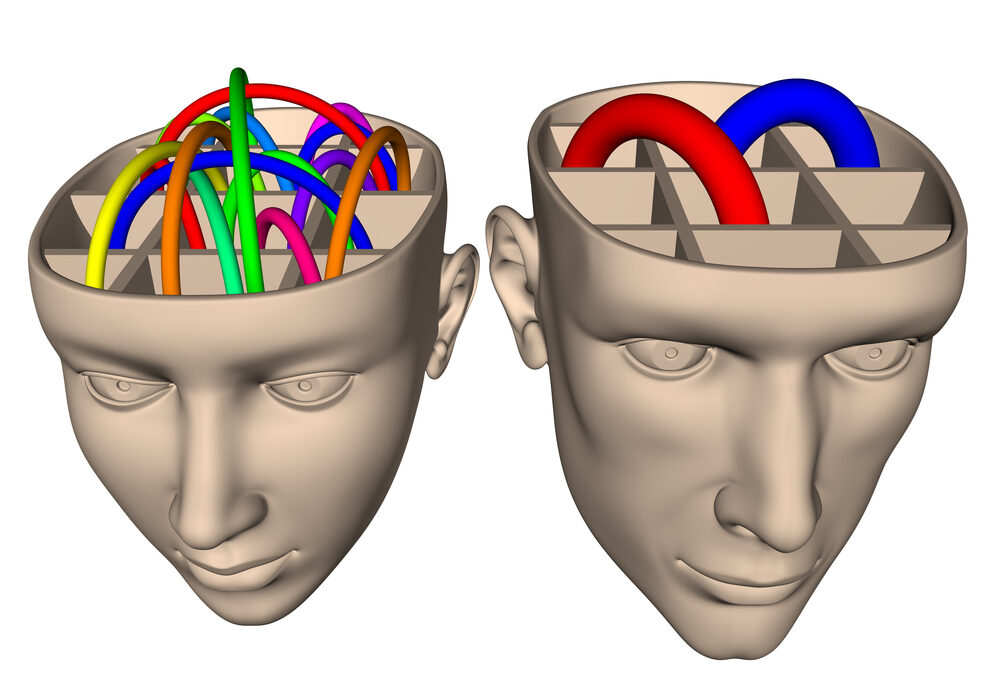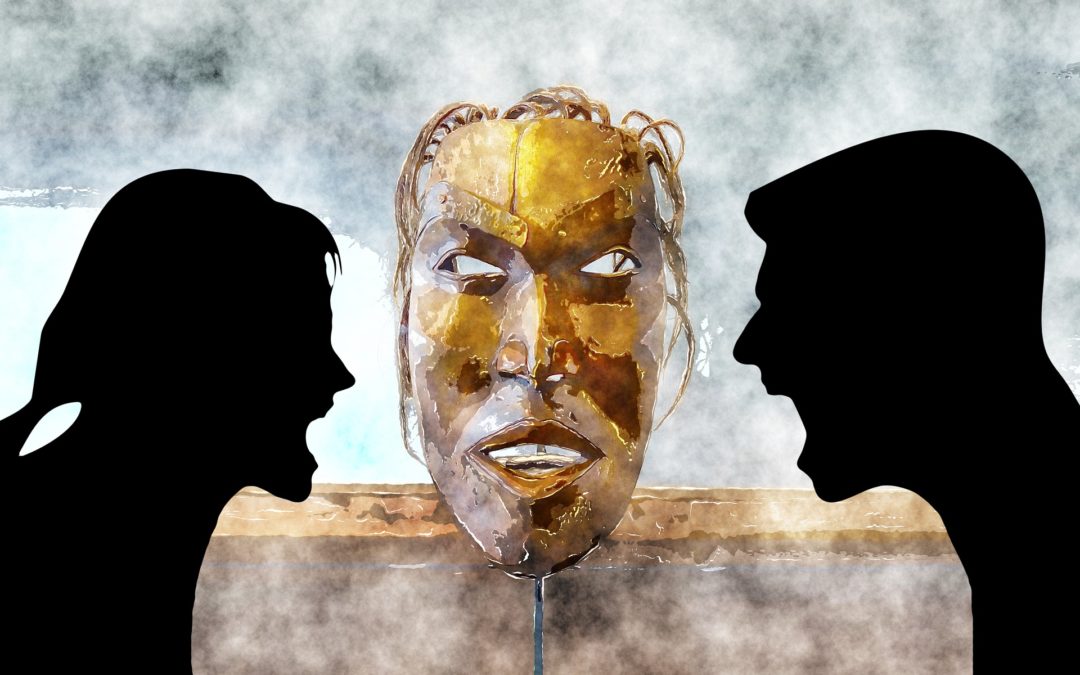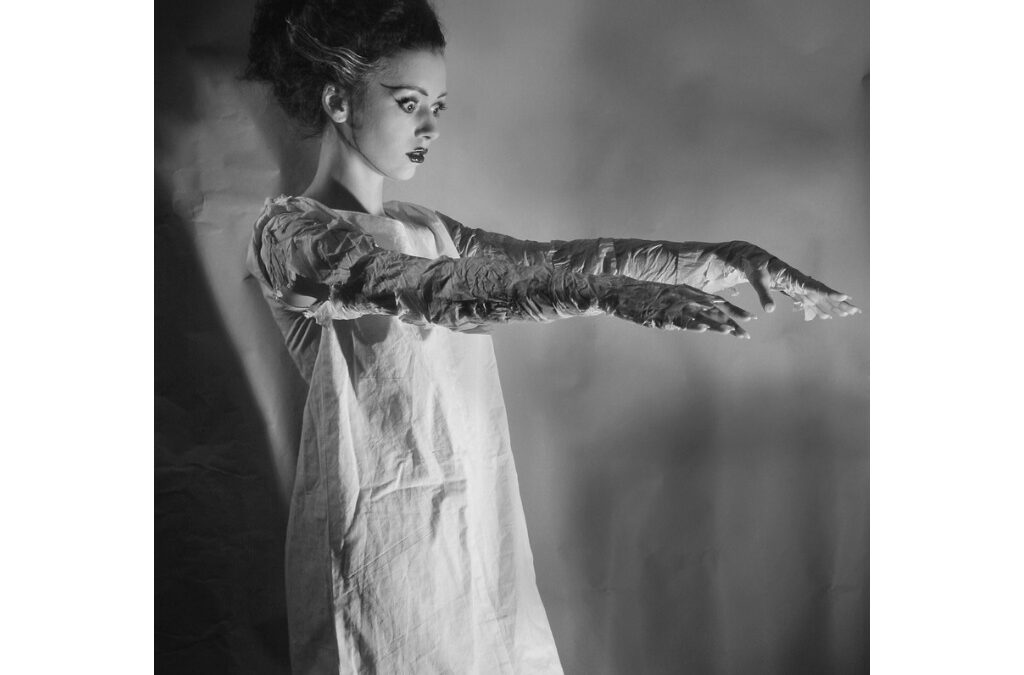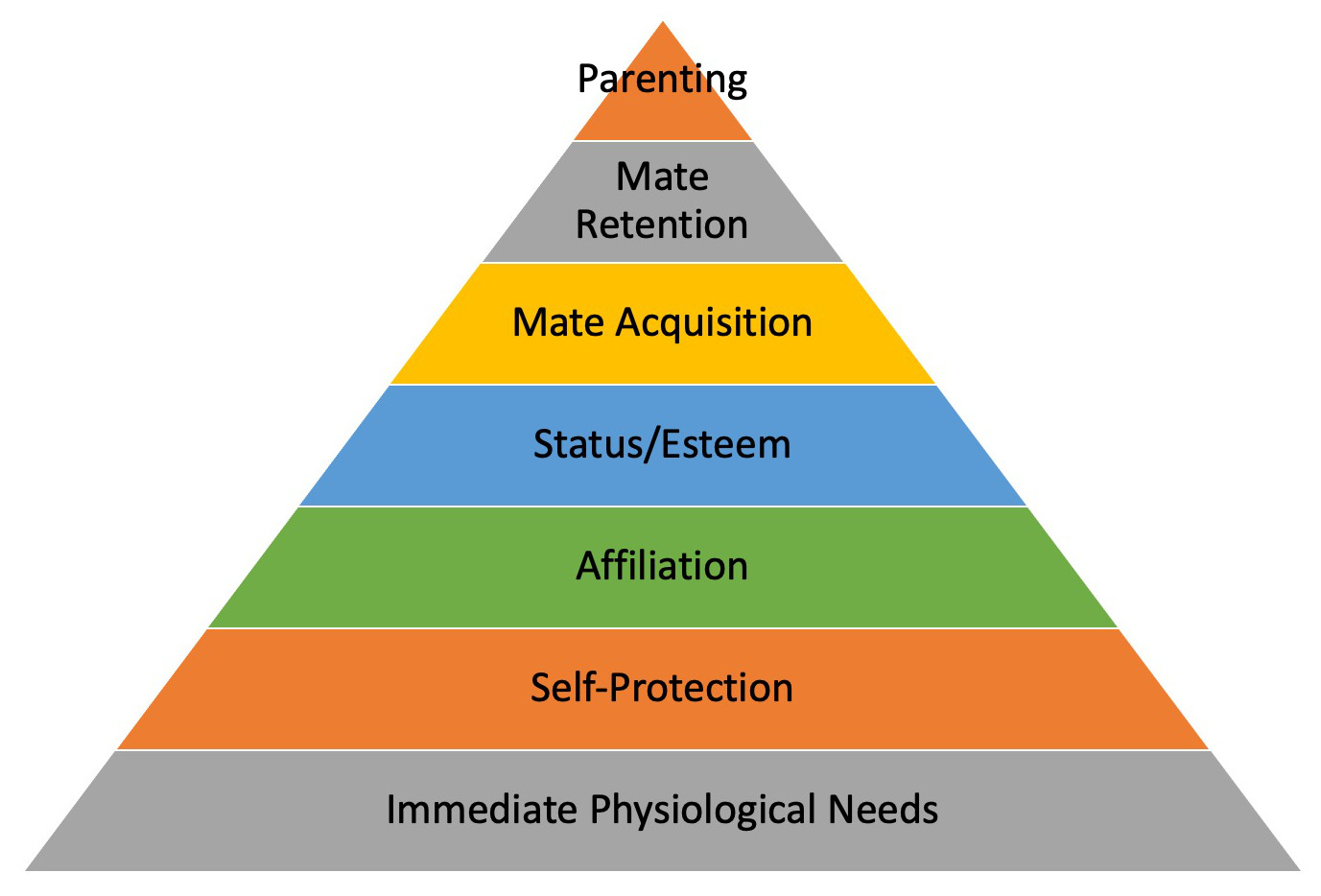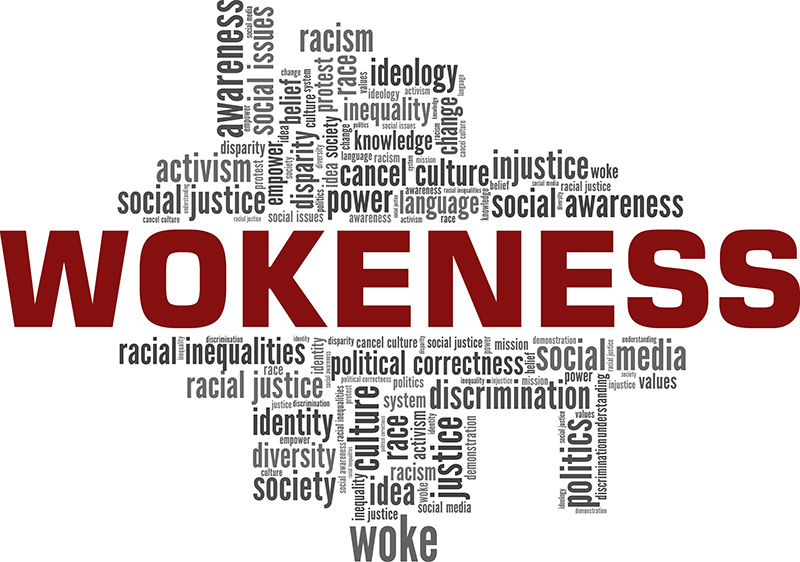
Wokeism: Good, Bad, and Misguided – a View from Mate Selection Science
Prologue and Caveat – Let’s Be More Woke
Before I get into the issues of non-binary advocacy and problems with contemporary “wokeism,” as promised last week (What Does Non-Binary Mean? Biology and Politics Collide), I must revisit the true meaning of “woke” and rehabilitate its power at this moment in the early days of the Trump presidency.
“Woke” was a term borrowed from the black civil rights movement that signaled awareness of systemic injustices and a commitment to combating them.
At its root, being “woke” means being awake to (aware of) the things happening around you – including speaking out and not capitulating out of ignorance, denial, self-interest, or fear. Nothing wrong with that if one does not get “too righteous” or “elitist” in tone.
Trump, Musk, and their minions are now engaged in a soft but fast-paced coup of the U.S. federal system and the Constitution. Right now, we need to be MORE AWAKE, not less. We need to resist. I endorse being more woke to save our democracy. To quote “Elon the Great,” “we are at a fork in the road.”
Currents and Countercurrents of “Wokeness.” What a mess.
To complicate the central message of this post almost beyond recognition (and make it even less palatable to my gay friends), we now have a significant backlash against diversity, equity, and inclusion programs and a cessation of hiring targets from dozens of private companies.
Google will no longer mark cultural observances like Pride Month, Women’s History Month, and Black History Month. This is a symbolic but nasty overreach against justice and inclusion. It is another form of the fast-paced coup and demonstrates more capitulation to investors and the Trump administration — performative virtue signaling on the other end of the political spectrum.
At the World Economic Forum in Davos, Switzerland, Trump said his administration is moving to “abolish all discriminatory diversity, equity, and inclusion nonsense,” in both the government and the private sector.” Nonsense? What a mess.
(Ok, let’s shift gears and follow up from the last post through the lens of evolutionary psychology and mate selection science. The serious-minded should read the notes at the end.)
The “Wokescenti”
As wokeism infiltrated culture in the last decade, it often constructed hierarchies of moral superiority, intellectual elitism, and cultural gatekeeping, at least in the minds of the political Right. Wokeism began to accrue layers of performative virtue signaling. Meghan Daum’s term “wokescenti”* described a social class of progressive elites who wielded their “enlightened” views like a weapon, silencing descent under the guise of social justice. Yes, sometimes they do.
But the political Right mostly invented the idea of woke elites to mischaracterize their positions and demean their informed views. Science be damned. The college-educated were latte-drinking woke liberals, basking in their self-righteous superiority.
Political Implications of Non-binary Advocacy
Non-binary advocacy (and psychological identity trend) is prone to political motivation and tones of elitist “wokeism.” Such advocacy is warranted for marginalized groups within the broad and diverse LGBTQAI+ community.
But there may be a more profound purpose not openly stated: to weaken men (or “patriarchy” as they define it) and empower women generally.
Giving more power to women and less to men is arguably a good thing – but this advocacy can run off the rails of factual clarity and the rights of free speech.
Posturing and Virtue Signaling – Bad Habits of Wokeism
Modern “wokeism” is known for the display (signal) of “virtue,” or so-called “enlightened thinking,” by giving preference to the rights of oppressed communities. This awareness of outlier group identities provides a stepping stool to an elitist moral high ground, bolstering status as a sophisticated person or organization. Among Gen Z it is, no doubt, “cool” to be queer.
“Virtue signaling” can be seen every single day in advertising. Companies rush to showcase their inclusivity, saturating screens with images of interracial couples and sexual preference diversity. The line between authentic advocacy and virtue signaling is often blurred. Those companies and media productions are clearly “woke.”
Even NFL Football – as Woke as it Gets
In the recent Superbowl commercial (Leave the Past Behind), the NFL assumed it was ok to stereotype teenage boys as stupid, mean, and physically hapless when competing against girls. Featuring a white boy and black girl one-on-one, this was an unnecessary anti-male plot line used to promote girl’s flag football in high schools.
The girls outperformed the boys in a biologically inaccurate comparison of physical strength and agility. Bucking the recent trend by companies cited above, NFL Commissioner Roger Goodell recently said the NFL would continue its diversity efforts; this commercial aligns with that position.
Wokeism Supports a Social Constructivist Model of Human Difference
Contemporary wokeism primarily supports a social constructivist model of human difference. It over-emphasizes the impact of “nurture” and social conditioning and downplays the forces of nature and biology.
Evolutionary psychologists and sociobiologists know that learning (culture) and evolutionary adaptation work together – they do not conflict; they are natural explanatory partners.** Social activism, especially the most woke version, should not throw out biology to make its case.
Sometimes, this emphasis on social conditioning paradoxically conflicts with some of the claims by marginalized groups as it relates to biological sex, gender expression, and (especially) sexual preference (e.g., being born gay.)
Wokeism Paradoxically Stifles Free Speech
Perhaps the most troubling aspect of modern wokeism is its tendency to stifle free speech. Free speech was once seen as the epitome of enlightened thinking and inclusivity. But in recent years, conservative or libertarian voices have been drowned out on college campuses. Cancel culture is used as a tool of suppression. That is antithetical to a liberal education.
Men’s rights advocates (not necessarily conservative or libertarian politically) were shouted down in Canada and universities in the U.S.
Authors and advocates of a biological, evolutionary-based view of male and female differences have also been silenced or censored.
Woke Activism Does Not Include Men (or at least not White Men)
Woke activism does not include men. Wokeness does not acknowledge the legitimate concerns of men’s rights groups.
Embedded in this rationale to discount the impact on men is a pernicious premise (within the concept of patriarchy) that all men have all the power. Class intersectionality is conveniently forgotten when applied to men. Poor men, by fiat, are seen as part of an oppressive patriarchy.
To underscore this point, let me share the incisive observation of Meghan Daum:*
For all their thinking about theories of intersectionality among oppressed groups, too many women seem to have difficulty understanding why a homeless man who whistles at a young woman as she’s off to her fancy internship every morning is not exactly a foot soldier for the patriarchy.
Mate Selection Science Recasts the Premise of the Patriarchy
As mentioned in the last post, the term “non-binary” gained traction in feminist-driven gender studies academic programs. Empowering women is a worthy goal.
However, such empowerment should also acknowledge (get ready for a heavy lift):
- the sexual selection forces on male and female behavior,
- the power of female preference in mate selection,
- the collusion of women to create an uphold class hierarchy, and
- the negative impact on men (of all races) when socioeconomic intersectionality is not applied to them.
Such acknowledgment recasts the premise of patriarchy.
Trans/Non-binary/Queer advocacy sometimes aims to:
- De-legitimize the biological and psychological differences between the sexes – male and female. One definition of non-binary (What Does Non-Binary Mean? Biology and Politics Collide) is “neither male nor female.”
- De-legitimize male sexuality and demonize “maleness” with subtle or not-so-subtle expressions of misandry. (See the NFL commercial above.)
- De-legitimize or deny the existence of the male-female mating economy and the economic-erotic bargain (exchange of resources for sexual access).
- This “bargain” is an ancient (primarily unconscious) infrastructure that rules human/primate (heterosexual) sexual reproduction and creates the expression of power and dominance hierarchies.***
- Deny that women help create “patriarchy” and willingly participate in the economic-erotic bargain.
“Woke” Advocacy Mutes the Wisdom of Mate Selection Science
Modern dynamics of heterosexual mate selection are complicated. There are unique vulgarities of dating in the digital world, changing economics for men, and six decades of female empowerment to assimilate into contemporary male-female dynamics.
There is a (long) list of traits women prefer in their mate, some of which do not easily coexist, that exerts enormous complexity into female choice. But the ancient infrastructure, biologically and culturally encoded by thousands of years of evolutionary adaptation, remains as follows:
Men desire power and resources because women desire men who have power and resources. Female choice of mates in sexual selection drives male behavior in nearly all mammals. Female choice is the “first cause.” The motivation of men and women in sexual selection drives most human behavior and forms a symbiotic alliance.
Being Woke as Liberation
Owning our evolutionary adaptations for human reproduction may be necessary for us to be fully awake to our world. Acknowledging our biological underpinnings does not undermine the quest for equality; rather, it enriches our understanding of the forces that shape society. Being “woke” to that is not a bad habit; it is liberation and a beginning.
Acknowledging and upholding fundamental human rights and the truth that diverse teams are more productive and creative than homogeneous teams (in most cases) is also a necessary part of being awake to the world that is emerging. Being “woke” in that way is the only way forward.
One Final Reminder: Our Form of Government is Threatened
American constitutional democracy, with checks and balances, is under assault. Governmental agencies are being purged. Guard rails to protect everyday Americans are being torn down. We do not want a presidential oligarchy and kleptocracy. “I have a dream.” Let’s be “woke” to that!
Notes
*The Problem With Everything, My Journey Though the New Culture Wars, Meghan Daum, 2019
**Evolution and Learning Are Not in Conflict
Construing evolution and learning as automatically in conflict is a mistake. They are not located at the same level of analysis. Learning is a proximate explanation, whereas evolution is an ultimate one. The proximate level of analysis explains how something works, whereas the ultimate level explains why it works that way.
To say that something is a product of evolution does not imply anything about how the behavior comes about during an organism’s lifespan. Furthermore, evolutionary thinking does not suggest that behavior will be uniform across cultures but that the neurocognitive machinery that produces behavior will be uniform across cultures.
Mate selection science primarily studies the neurocognitive machinery at the ultimate level of cause – the essential components for mating and reproduction across all animal and human cultures.
***The Bargain is Part of our Neurocognitive Machinery
The bargain is more subtle and diffuse (if not undiscussable) in modern dating because it now rests primarily upon a foundation of “woke” feminist empowerment narratives.
But it remains pre-eminent or prioritized in mate choice as heterosexual women (primarily, but not entirely, of child-bearing age) navigate a tension or trade-off question: what is the necessary balance between provider-ship power and the character traits that guarantee the caretaking of children?
This question and the “bargain” are at the ultimate level of underlying neurocognitive machinery.


